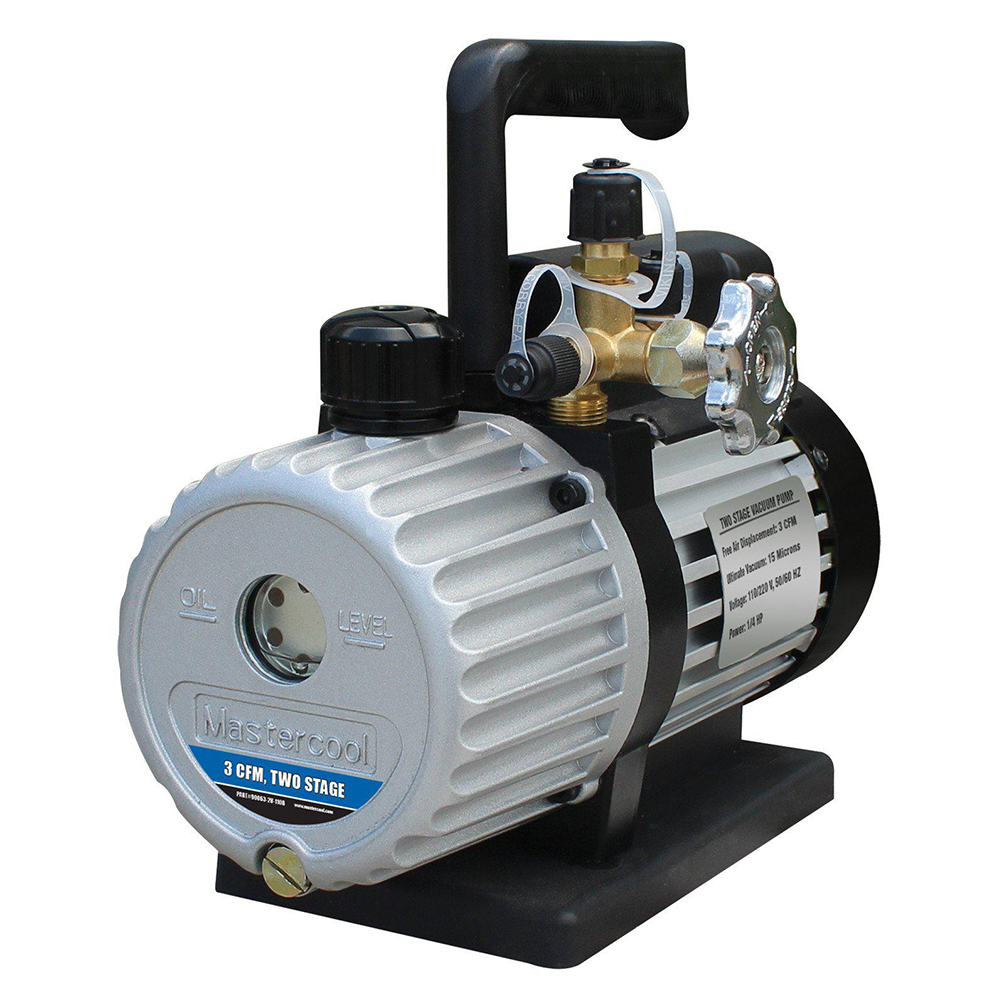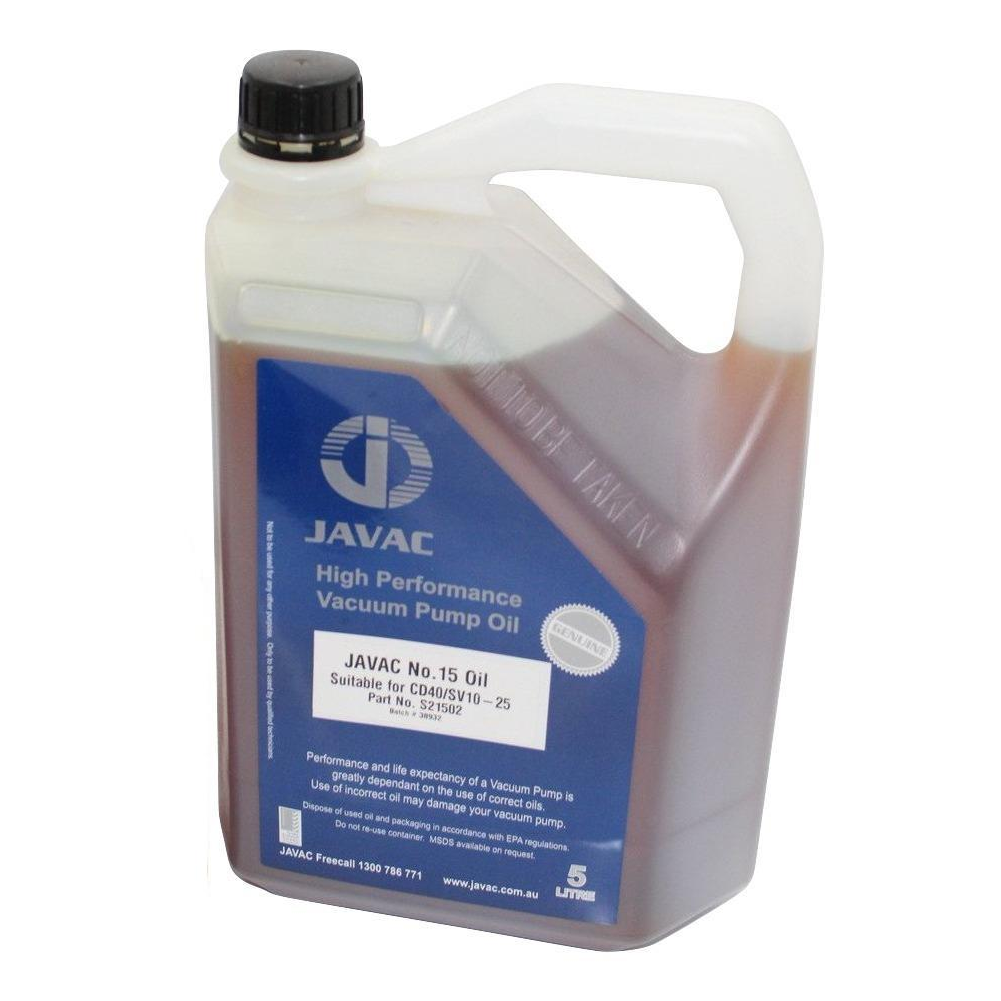
Vacuum pump oil is required to keep your vacuum pump running.
A vacuum pump oil lubricates the pumping machine. It simultaneously collects impurities and moisture from the evacuated systems. It's often a refined mineral oil with a specific viscosity and low vapour pressure for the application in question.
Despite using the name "oil," modern pump oil has evolved much beyond distilled petroleum products. Oils that are double- and triple-distilled and silicone-based synthetics, low sulphur, hydro-treated, and even pump-cleaning oils are now available. These oils must be additive-free. It's as simple as checking the manufacturer's operating instructions to determine which oil you'll need.
VACUUM PUMP OIL IMPORTANCE
In a vacuum pump, the oil plays an important function. It's an important aspect of the vacuum generating process for oil-sealed vacuum pumps such as vane and piston pumps. The vacuum fluid, for example, causes a smooth rotation cycle in oil seal vane pumps, allowing the blades to slide smoothly within the rotor and assisting in the trapping and movement of gas from the intake to the exhaust. Vacuum fluid is used to lube the gear mechanism, even in "dry" pumps like dry screw pumps.
It's critical to choose the right fluid for your application. A hydrocarbon-based fluid, for example, would not be used in an oxygen-rich environment to avoid oxidation of the hydrocarbon fluid, which would result in deterioration and a potentially harmful byproduct. For oxygen-rich applications, a complete variety of inert fluids is available. For automotive and refrigerant applications that require a fire-resistant fluid, other sector fluids are available.
BENEFITS OF USING QUALITY VACUUM PUMP OIL
Not all vacuum pumps react to lubricants in the same way. The desire to find a cheaper alternative vacuum pump oil can sometimes lead to a poor purchasing selection. Low-quality lubricant's detrimental effects are frequently overlooked, resulting in poor performance, higher energy consumption, and equipment damage. A costly error that often overcomes any early cost savings.
- More equipment is available
- Reduced total cost of ownership over time
- Lower maintenance costs
- Oil that lasts longer
- Lubricant use is reduced.
- Keep the machine's energy efficiency and overall performance at a high level
- Maintain a safe working environment
- Contribute to environmental protection
RISKS OF USING LOW-QUALITY LUBRICANT
- The lubricant's capacity to protect the pump's vital components, such as bearings, deteriorates
- Varnishing/oxidation
- Increased usage of energy
- There is a greater chance of catastrophic device failure.
- Condensation has increased.
- Air system seals/seal material swelling or cracking
- Production time is lost while costly repairs are made.
WHEN DO YOU NEED A VACUUM PUMP OIL CHANGE?
Changing the oil when it becomes polluted is critical to optimise pump function. Some impurities can be expelled from the vacuum pump while running, but others can become stuck in the oil reservoir. The ultimate vacuum that the pump can achieve will be diminished once the oil gets saturated with pollutants, as it will be battling the contaminants' outgassing.
Oil changes can be done daily, weekly, or monthly, depending on potential pollutants, application, and oil type. How frequently should you replace your oil? Consider the following scenarios:
- The level of the vacuum pump bouncing up and down could indicate oil contamination.
- If you notice oil discolouration, whether it's darkening for hydrocarbon oils (due to heat or other pollutants) or turning to a creamy colour, don't hesitate to contact us (brought on by moisture contamination).
- If the vacuum pump fails to achieve the necessary amount of vacuum.
These scenarios should aid in identifying whether your vacuum oil's capacity to maintain its vapour pressure or intended viscosity for maximum efficiency has changed. Make sure to change your pump oil according to the manufacturer's instructions, and dispose of any used oil in a legal and allowed manner. When changing vacuum oil, it's also good to check any pump filtering, such as exhaust mist filters, screw-on pump filters, and intake traps. The vacuum pump will work more efficiently if the filters are changed as they approach the end of their useful life.
HOW TO CHANGE VACUUM PUMP OIL
To change the fluid, make sure the system is turned off, and the pump is turned off. When the system is at working temperature, we recommend changing the fluid.
Drain all ports to ensure that all seal fluid is removed. If any of these ports are not serviced, the system will eventually fail prematurely.
- Ensure the pump is filled with oil to the shaft centerline level when adding new fluid to the system.
- Fill the pump no higher than the shaft's centerline.
- Starting the pump with the oil level over the shaft centerline may cause damage or failure to the post or impeller.
- Remove the suction then pour oil via the pump suction to add oil.
- Fill the reservoir to the sight gauge's FILL LINE.
- To remove all air from the system, open the air bleed valve on the heat exchanger.
- Run the pump for a few minutes, turn it off and double-check the fluid level.
- Fill the reservoir with more fluid as necessary.
- Make sure you don't overfill the container.
- Check port "D" for excess oil after unscrewing the bronze push-lock fitting!
In the reservoir, check the level of seal fluid. A high fluid level could indicate a water accumulation in the pool, which you must drain. Drain from port "C" until just oil drains, as water sits below the oil. Every 500 hours, perform a check.
Process
It's vital to monitor the level and quality of the lubricating oil to maintain long-term and dependable pump functioning. Solid impurities are entrained in the refrigeration system, and damp or acidified refrigerant runs through the pump during operation, causing all pump parts and mechanisms to fail. A sight glass is mounted in the pump's body to check the condition and quality of the oil. When the oil seen through the sight glass becomes tainted, it turns brown and foams. It is imperative to replace it with a fresh one after a long time of service. Even if you don't have any of the symptoms above, changing the oil every 100 hours of vacuum pump operation is good.
Step 1
Close the nut after removing the blanking cap and starting the pump to warm up the oil for less than a minute.
Step 2
Unscrew the drain plug at the bottom of the housing after turning off the pump. Then drain the used oil into the previously prepared container. Tilt the pump toward the drain plug to thoroughly empty the container. After exhausting the pump, double-check that it's properly screwed in.
Step 3
Refill with fresh oil till the fluid level hits half the height of the sight glass by removing the oil filler lid.
HOW TO CHOOSE THE BEST VACUUM PUMP OIL
One of the factors to keeping your vacuum pump in good operating condition is to make sure it's operated correctly. The lubricating oil or fluid matches all of the pump's specifications. In addition to lowering friction, vacuum pump oil helps cool the pump, prevent contamination, protect it from corrosion, and create fluid seals. Volatility, vapour pressure, and viscosity play a role in obtaining maximal performance, depending on your application.
Volatility and Vapour Pressure
As the temperature rises, oil with high volatility is more likely to change from a liquid to a vapour. Because liquids tend to evaporate, vapour pressure is the pressure at which oil molecules want to leave as vapour. Lower vapour pressure is preferable because less evaporation implies less variation in total pressure, and the pump operates better.
Pump Oil Viscosity
Viscosity is frequently the most important factor when it comes to vacuum pump oil. A fluid's viscosity measures its resistance to flow; low viscosity fluids are thin and liquid, whereas high viscosity fluids are thick and sticky. The molecule size in the fluid determines this. The important thing to remember is that when the temperature rises, the viscosity of the fluid drops, which might affect the oil flow and the seal between components. That's why it's critical to understand your pump's needs and uses so you can select the appropriate oil to keep things working properly.
Vacuum Pump Additives
Because they fulfil very different tasks, the additives in a motor oil differ from those in a vacuum pump oil. Motor oil, for example, may contain rust inhibitors that separate from the base fluid and settle as a sticky residue on interior services. On the other hand, Vacuum pump oil is refined for use in vacuum pumps and may contain corrosion inhibitors, anti-oxidants, and anti-foaming additives. Understanding your vacuum pump's performance needs is important since oils react very differently under high temperatures and pressure. Then, the wrong oil can harm the vacuum pump. In contrast, the appropriate oil can help it last longer and stay healthy.
CHOOSING VACUUM PUMP OIL FOR ROTARY PISTON VACUUM PUMP
How do you pick the best vacuum pump oil for your rotary piston vacuum pump? In various contexts, there are several methods of selection.
- Select vacuum pump oil with a lower viscosity grade if it is cold and difficult to start.
- If you use the vacuum pump for a long time at a higher pump temperature, such as in a hot summer environment where the suction gas is heated, or the inlet pressure is higher, use a high-quality vacuum pump oil with a higher viscosity grade. You can also use vacuum pump oil with a high temperature and a high load.
- If the vacuum pump's temperature is high and the standard for the pump's ultimate full pressure is low, such as the two-stage pump's maximum full pressure of 5pa, certified oil with a viscosity of 100 or 150 can be used instead. Mechanical oil, compressor oil, and mechanical oil price are also available at the same or slightly higher density.
- If the oil change interval is short and can meet the performance criteria, you can choose qualified vacuum pump oil with the same or slightly higher viscosity.
FEW TIPS FOR YOUR NEXT PUMP OIL CHANGE
If you follow these methods for vacuum pump maintenance, you'll get a steady return on your pump investment for many years.
- Begin by emptying any existing oil from the pump as it is still warm. It's critical to make sure the pump is hot since cooling the pump allows the moisture and impurities in the oil to separate. Impurities will cling to the walls as the oil flows, mixing with the new oil as the pump is refilled.
- Ensure there is no oil stuck inside the machine when emptying the oil. Allow the pump to sit for a few minutes to ensure that all the oil has been removed. Then carefully dispose of the dirty oil.
- After emptying the oil, open the air intake and operate the pump for 5-10 seconds before shutting it off.
- Finally, re-oil the pan. Please remember that not all oils are made equal while making your selection.
BUY ONLY QUALITY VACUUM PUMP OIL FROM HVAC SHOP
Put another way. The multipurpose element inside the vacuum pump, vacuum pump oil, lubricates the pumping device while also collecting moisture and impurities from evacuated systems. It's what keeps the pump, well, pumping. It's vital to replace the oil in a vacuum pump if you want it to function smoothly.
Don't settle for low-quality vacuum pump oils. Buy only the best quality oil for your vacuum pump from HVAC Shop. We also offer vacuum pumps and other HVAC equipment you need for your A/C business in Australia.






